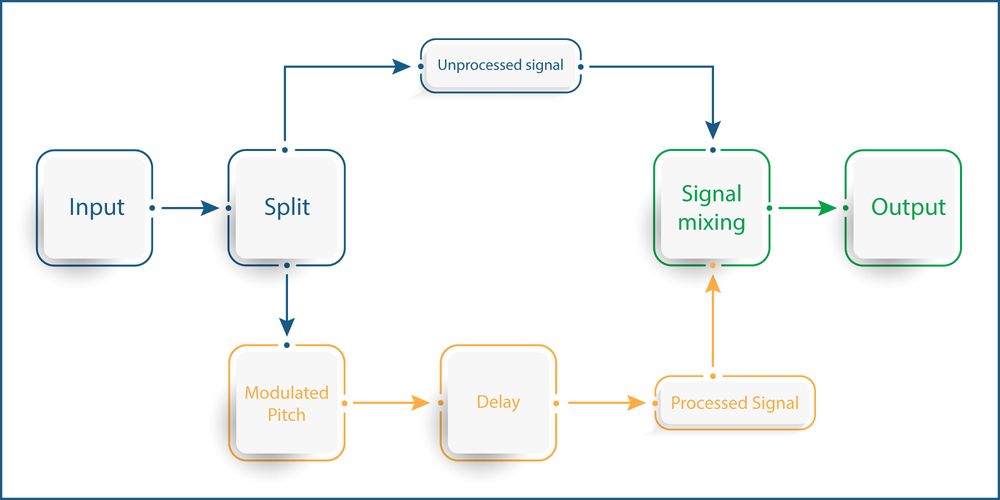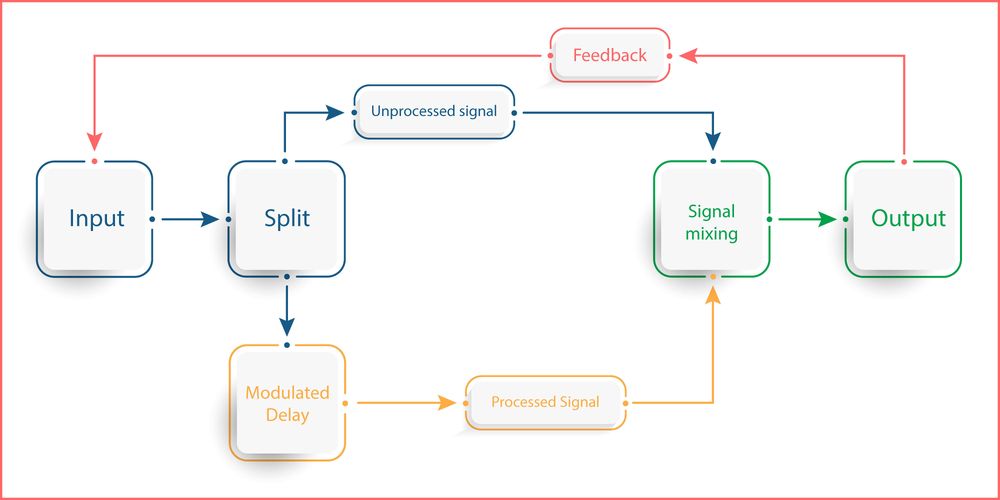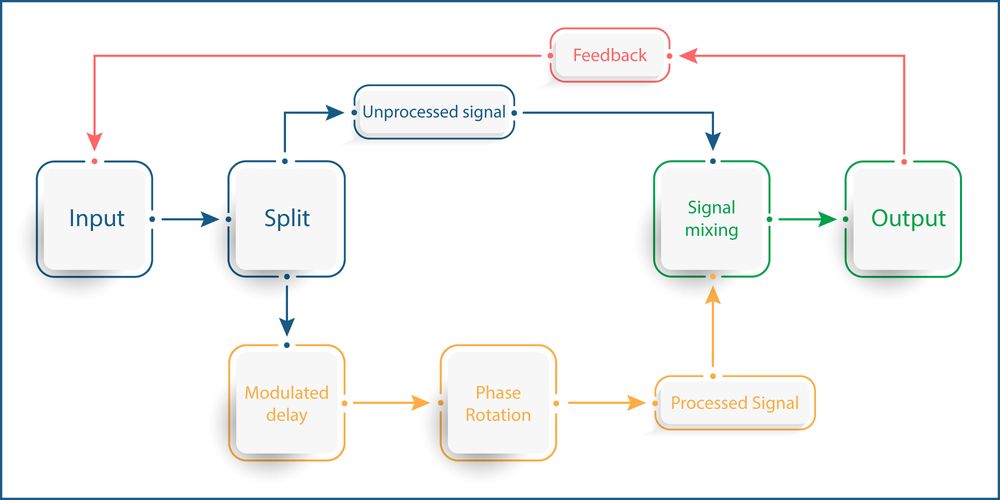6. Modulation effects
Another popular group of effect types offered by multi-effects devices is modulation effects. These effects make use of various effects like phase shifting that occur when a time-shifted and processed signal is mixed with the original signal. What's special about each modulation effect is that it varies very specific parameters in a certain way, hence the term "modulation." This leads to distinctive variations in phasing and comb filtering effects, which are characteristic of the various types of modulation effects.
For example, in a chorus effect, the time intervals between the original signal and the signal copy are modulated.

Chorus Signal Flow (Image: Carsten Kaiser):
This can make it sound as if two or more instruments are playing a passage with slightly different timing simultaneously. That's why presets for chorus effects might be named "Double" or "Ensemble." Chorus effects are great for making solo voices like singing, violins, or guitars sound fuller. If you want more control, you should look for parameters like modulation rate/duration and depth on your multi-effects unit.
A flanger works similarly to a chorus with a time-delayed signal copy. However, the output signal is fed back to its input, like with a delay.

Flanger Signal Flow (Image: Carsten Kaiser):
In a phaser, the phase of the delayed signal component is also rotated.

Phaser Signal Flow (Image: Carsten Kaiser):
The resulting sound includes stronger comb-filtering effects, where parts of the signal partially cancel out. This is why audio signals processed with a phaser can sometimes sound almost psychedelic. To have optimal control over flanger and phaser effects, you should ensure that precise adjustment of rate and feedback values is possible with these modulation effects.
Also in this effect group are vibrato, tremolo, and auto-pan. They modulate pitch, volume, or stereo position. Because vibrato and tremolo are somewhat part of the playing parameters of a performance, using them subtly can make audio signals sound more lively. Regardless of which modulation effect you want to use, the multi-effects device should already offer a mix function that allows you to control the balance between the original and effect signals.




